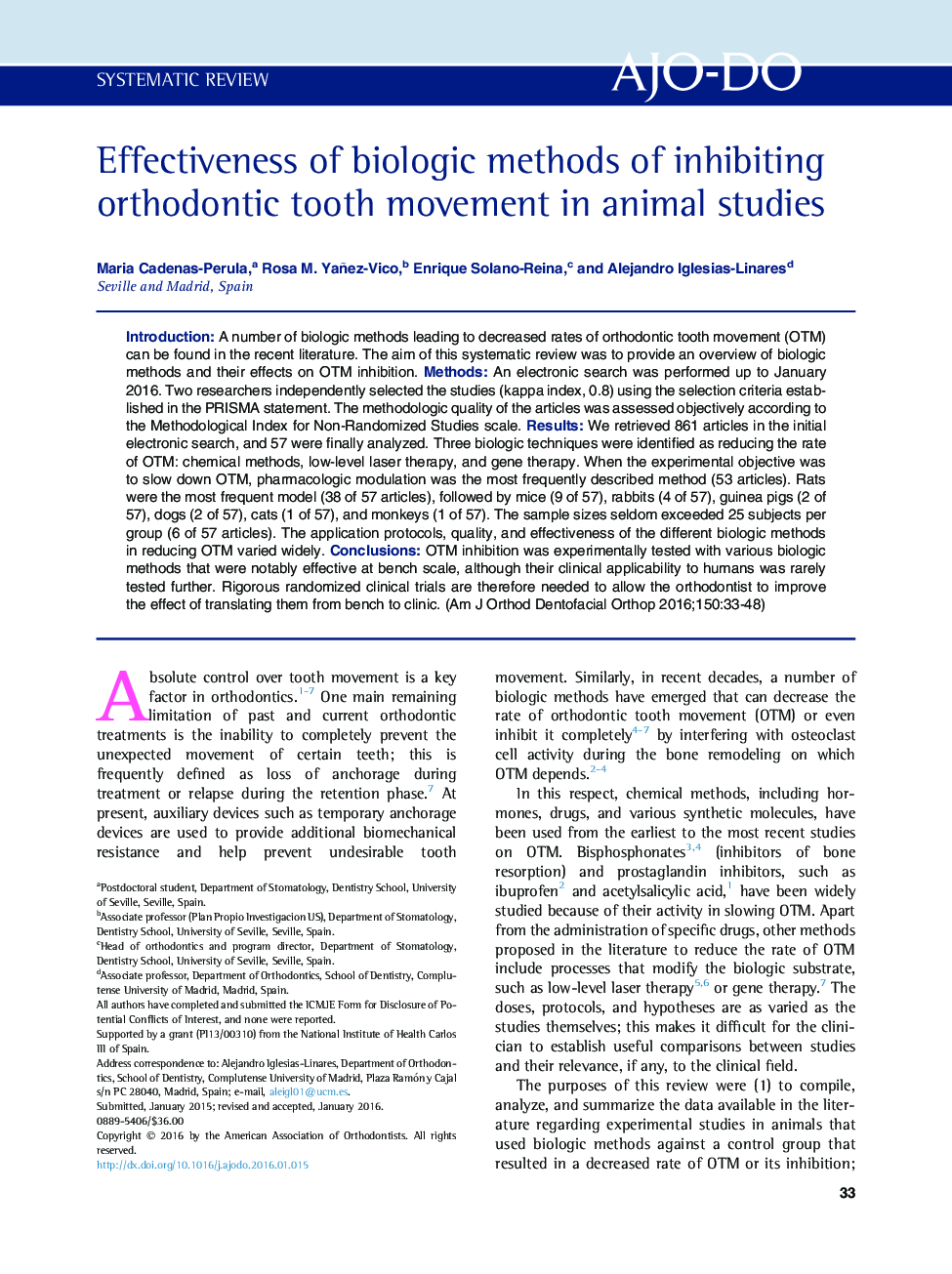| کد مقاله | کد نشریه | سال انتشار | مقاله انگلیسی | نسخه تمام متن |
|---|---|---|---|---|
| 3115370 | 1582674 | 2016 | 16 صفحه PDF | دانلود رایگان |
• Biologic methods can inhibit the rate of orthodontic tooth movement (OTM).
• This systematic review examined the effects of biologic methods on OTM inhibition.
• Chemical methods, low-level laser therapy, and gene therapy reduce the rate of OTM.
• Pharmacologic modulation was the most frequently described method (53 articles).
IntroductionA number of biologic methods leading to decreased rates of orthodontic tooth movement (OTM) can be found in the recent literature. The aim of this systematic review was to provide an overview of biologic methods and their effects on OTM inhibition.MethodsAn electronic search was performed up to January 2016. Two researchers independently selected the studies (kappa index, 0.8) using the selection criteria established in the PRISMA statement. The methodologic quality of the articles was assessed objectively according to the Methodological Index for Non-Randomized Studies scale.ResultsWe retrieved 861 articles in the initial electronic search, and 57 were finally analyzed. Three biologic techniques were identified as reducing the rate of OTM: chemical methods, low-level laser therapy, and gene therapy. When the experimental objective was to slow down OTM, pharmacologic modulation was the most frequently described method (53 articles). Rats were the most frequent model (38 of 57 articles), followed by mice (9 of 57), rabbits (4 of 57), guinea pigs (2 of 57), dogs (2 of 57), cats (1 of 57), and monkeys (1 of 57). The sample sizes seldom exceeded 25 subjects per group (6 of 57 articles). The application protocols, quality, and effectiveness of the different biologic methods in reducing OTM varied widely.ConclusionsOTM inhibition was experimentally tested with various biologic methods that were notably effective at bench scale, although their clinical applicability to humans was rarely tested further. Rigorous randomized clinical trials are therefore needed to allow the orthodontist to improve the effect of translating them from bench to clinic.
Journal: American Journal of Orthodontics and Dentofacial Orthopedics - Volume 150, Issue 1, July 2016, Pages 33–48
